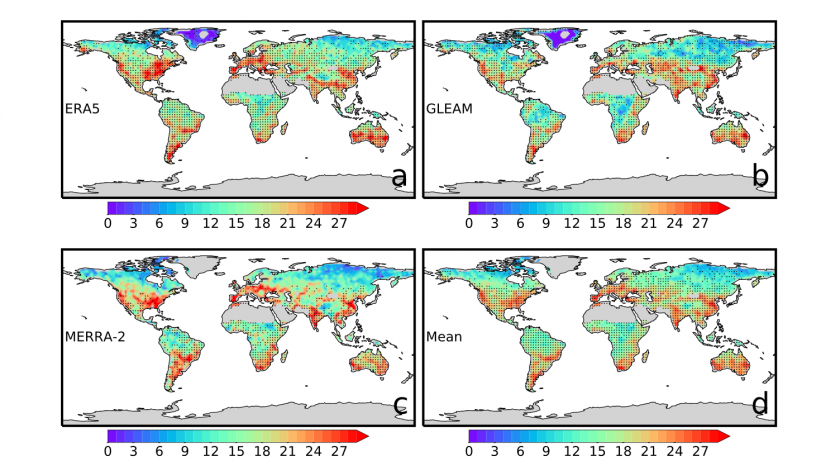Rapid Shifts from Drought to Downpour Occurring More Often
August 29, 2023

New research shows that wild swings from severe drought to heavy rains are becoming more common with climate change in many parts of the world and that feedback loops from the land itself are likely contributing to the trend.
The research looked at four decades of meteorological and hydrological data on a global level and found seven regional hotspots around the world where the trend was getting worse: eastern North America, Europe, East Asia, Southeast Asia, southern Australia, southern Africa, and southern South America.
“We are especially concerned with the sudden shift from drought to flood,” said coauthor Zong-Liang Yang, a professor at The University of Texas at Austin Jackson School of Geosciences. “Society usually has difficulty responding to one kind of natural disaster like drought, but now you suddenly have floods too. And this has been happening in many places.”

The study was published in the journal Nature Communications Earth & Environment.
The team looked at three global sets of meteorological and hydrological data from 1980 to 2020 to document the trend. They found that the likelihood of a sudden shift from drought to dangerous downpours increased roughly a quarter of a percent to 1% per year over that time period, depending on the location. (See map.)
The research team included scientists from the Jackson School’s Department of Earth and Planetary Sciences, The Hong Kong Polytechnic University Research Institute for Land and Space, and Columbia University’s Department of Earth and Environmental Engineering.
There have been many notable examples of the sudden shift from severe drought to heavy and potentially dangerous downpours in recent years. For example, in December 2022, California was facing its worst drought in a millennium, but this situation was quickly shifted by heavy rains that caused record flooding in January, February and March of 2023.
There are many factors that can contribute to sudden changes in climate and weather, including the El Niño and La Niña climate patterns and climate change itself. But researchers said this was the first study to look at the potential impact of processes that involve the land itself. Researchers discovered the land-based feedback loops with the relatively new technique of causality analysis, a statistical technique that can help determine if one factor is directly responsible for another happening.
They found that:
- During heavy drought in humid regions, evaporation of water from soil and plants is kicked into overdrive, pushing precipitation into the air and providing a moisture source for heavy rainfall to develop; and,
- During heavy drought in arid regions, the hot weather and low pressure creates a pressure gradient that draws in moisture from other areas, such as the ocean.
Coauthor Shuo Wang, an associate professor at The Hong Kong Polytechnic University, said such rapid shifts are expected to become more likely with climate change. The new research, particularly the discovery of the land-based mechanisms, can be used to help increase the accuracy of predictive climate models as well as well as help communities prepare for swings between drought and heavy rain conditions, he said.
“Climate change is fueling back-to-back droughts and floods which have caused widespread devastation, resulting in loss of life and damages to property, infrastructure, and the environment,” Wang said. “Our findings provide insights into the development of early warning systems for mitigating the impacts of rapid dry-wet transitions.”
For more information, contact: Anton Caputo, Jackson School of Geosciences, 210-602-2085; Monica Kortsha, Jackson School of Geosciences, 512-471-2241.
